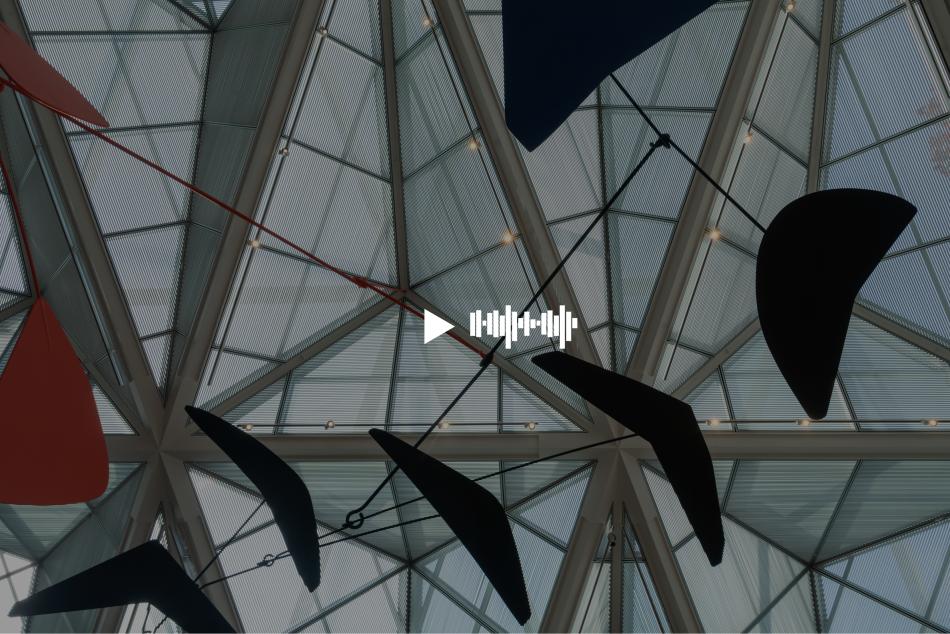NARRATOR:
Maiastra, a supernatural bird with magical powers in Romanian folk tradition, inspired this work by Constantin Brancusi and his other sculptures nearby. But here we see no feathers, no claws, no beak. Bird In Space is the study—or illusion—of flight itself.
Harry Cooper, curator and head of modern art.
HARRY COOPER:
The bronze form rises slowly, curving, tapering once, swelling out again, tapering again with a bit of a bevel, a sharp kind of finish at the top. It doesn’t seem to end. It seems as if it might continue. It just keeps tapering.
NARRATOR:
Over some twenty years Brancusi produced multiple works on this theme, some in marble, some with highly polished bronze, as seen here. The gleaming surface of the bronze makes the sculpture nearly disappear as you find yourself looking at your own reflection and that of the room around you.
Equally important for Brancusi was the base of the sculpture.
HARRY COOPER:
Where does the sculpture stop? It has not just one pedestal but two, and this is something that Brancusi did that was so important: taking the base, the pedestal, the plinth, which had always been a kind of utilitarian thing, something like the frame of a painting, and making those a part of the sculpture. The line is blurred between sculpture and base.




